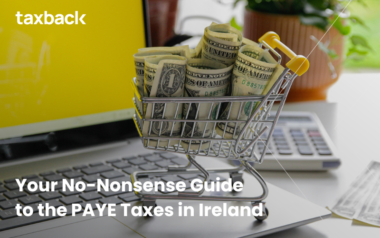If you are moving abroad for a new career opportunity or moving to Ireland for employment it is a good idea to split your residence to avoid being taxed twice on the income you earn.
In this blog, we will discuss what split-year treatment is, how to qualify and how to claim it.
What is Split Year Treatment?
Split-year treatment means that you won’t get taxed on the same income in both countries. You will pay tax in Ireland for the income you earn when you are in Ireland and then you will pay tax in your new country for the income you earn there. Essentially, whichever country you earn income in you will only be taxed in that country.
Split-Year Treatment when arriving in Ireland
If you arrive in Ireland throughout the year and will be a resident the following year, you can claim split-year treatment in the year you arrive. This will mean that you are treated as a resident in Ireland from the day you arrive and you will then be taxed normally.
The full tax credits are allowable on a cumulative basis. This means that even though you were only resident for part of the year you can receive the full year of tax credits.

Split-Year Treatment when Leaving Ireland
If you are moving abroad for employment you will be considered a resident in Ireland in the year you leave and a non-resident the year after. You can apply for the split-year treatment as soon as you leave Ireland.
By applying for this it means you are a resident until the date you leave. You have to prove that you intend to stay for the relevant period and you meet the residence requirements for the following year.
All the income you earn up to the departure date is taxed normally. The income you earn from employment after your departure date is not considered for Irish tax purposes. The full tax credits are usually allowable on a cumulative basis.
It’s important to note that split-year treatment applies only to employment income.
Get Your Irish Tax Refund Now!
Example:
John is an Irish national who moved to Australia in June 2020. He intends to stay abroad for at least 2 years.
As an Irish national, he is taxed on his worldwide income (income from all sources) in 2020.
By claiming Split Year Treatment in 2020 on the basis he will be a non-resident in 2021, his Australian employment income will not be subject to tax in Ireland in 2020.
John was earning €40,000 per year at the point he left in June.
He is entitled to claim full tax credits for 2020.
Leaving in June, he may be entitled to a tax refund.
The amount of refund he can claim will depend on:
- how much his employer has deducted from this salary
- credits John is entitled to
- the basis of assessment (single, married etc.)
- and his type of payment (cumulative or week1/month1 basis)
If you’re leaving Ireland, you can use our tax refund calculator to find out how much tax rebate you are owed back!
How do I claim Split Year Treatment?
You can apply for the split-year treatment yourself online. However, if you need help claiming this relief and want to leave the boring tax paperwork with the experts, then you can contact Taxback.
Our average Irish tax refund is €1,880.
Last Updated on December 18, 2025







